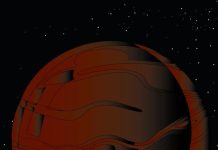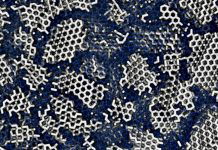
Many astronomy-interested people know of the Hyades and the Pleiades. They’re star clusters in the Taurus constellation.
They’re two out of a handful of star clusters that are visible to the unaided eye under dark sky conditions.
It turns out that these clusters, along with more than 150 other nearby clusters, all originated in only three massive star-forming regions.
Open star clusters like Hyades and Pleiades contain hundreds of stars that are loosely bound together by mutual gravitation.
They have fewer stars than globular clusters and aren’t as tightly packed. They also aren’t spherical like globulars; instead, they follow the galactic plane.
They’re usually found in the Milky Way’s spiral arms rather than the halo where globulars reside.
Eventually, open clusters lose their gravitational bond with one another and are called stellar associations. They still move through space together and are then known as a moving group. Their movement allows astronomers to understand their origins.
In a new research article in Nature, a team of researchers traced the origins of 155 young star clusters within about 3,500 light years from the Sun.
The article is titled “Most nearby young star clusters formed in three massive complexes.” The authors are from institutions in Austria, Germany, and the United States.
“Young star clusters are excellent for exploring the history and structure of the Milky Way.
By studying their movements in the past and thus their origin, we also gain important insights into the formation and evolution of our galaxy,” says João Alves from the University of Vienna, co-author of the study.
The researchers used Gaia data and spectroscopic observations of star clusters to trace their histories back over 60 million years. They uncovered three families of star clusters, each one associated with one of three star-formation regions.
“This indicates that the young star clusters originate from only three very active and massive star-forming regions,” says Alves.
The researchers began with a sample of 272 clusters. They found that between 30 and 50 million years ago, almost 60% of their trajectories converged in three locations. This showed that “a large fraction of clusters in the solar neighbourhood share common origins.”
The three families of clusters are named after their most prominent members: Collinder 135 (Cr135), Messier 6 (M6), and Alpha Persei (?Per). The clusters contain 39, 34, and 82 clusters, respectively. Collectively, they contain 57% of the 272 clusters in the sample and 59% of the 48,514 stars in the sample.
“These findings offer a clearer understanding of how young star clusters in our galactic neighbourhood are interconnected, much like members of a family or ‘bloodlines’,” says lead author Cameron Swiggum, a doctoral student at the University of Vienna. “By examining the 3D movements and past positions of these star clusters, we can identify their common origins and locate the regions in our galaxy where the first stars in these respective star clusters formed up to 40 million years ago.”
The team’s research uncovered more than just the history of star clusters. They also worked out that over 200 supernova explosions must have occurred in the three star-forming regions to eject all of these clusters. But supernova explosions are extraordinarily powerful and 200 of them release enough energy to shape their environment on a grand scale.
The authors say that these explosions created a gigantic bubble in the ISM. “This could explain the formation of a superbubble, a giant bubble of gas and dust with a diameter of 3,000 light-years around the Cr135 family,” Swiggum said in a press release.
Our Solar System is also inside one of these bubbles, called the Local Bubble. Inside the bubble the gas is thinner and hotter than outside it. “The Local Bubble is probably also linked to the history of one of the three star cluster families,” adds Swiggum. “And it has likely left traces on Earth, as suggested by measurements of iron isotopes (60Fe) in the Earth’s crust.”
It’s a truism to say that finding connections between things creates meaning. The stars in the sky aren’t just “there.” There’s a long story to be told by unravelling what we see as static. This research is another example of the powerful Gaia spacecraft’s ability to find relationships between stars and weave an evidence-based tale of their histories. And we’re somewhere in the middle of it all.
“We can practically turn the sky into a time machine that allows us to trace the history of our home galaxy,” says João Alves. “By deciphering the genealogy of star clusters, we also learn more about our own galactic ancestry.”
Written by Evan Gough/ Universe Today.



